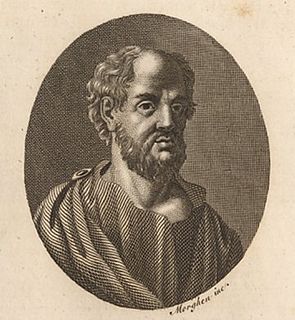 W
WApelles of Kos was a renowned painter of ancient Greece. Pliny the Elder, to whom much of modern scholars' knowledge of this artist is owed, rated him superior to preceding and subsequent artists. He dated Apelles to the 112th Olympiad, possibly because he had produced a portrait of Alexander the Great.
 W
WEchion, also known as Aetion, was a celebrated Greek painter spoken of by Lucian, who gives a description of one of his pictures, representing the marriage of Alexander and Roxana. This painting excited such admiration when exhibited at the Olympic Games, that Proxenidas, one of the judges, gave the artist his daughter in marriage. Echion seems to have excelled particularly in the art of mixing and laying on his colors. It has commonly been supposed that he lived in the time of Alexander the Great; but the words of Lucian show clearly that he must have lived about the time of Hadrian and the Antonines. Aloys Hirt supposes that the name of the painter of Alexander's marriage, whom Lucian praises so highly, as Aetion, is a corruption of Echion.
 W
WEirene or Irene was an ancient Greek artist described by Pliny the Elder in the 1st century. She was the daughter of a painter, and created an image of a girl that was housed at Eleusis.
 W
WEuphranor of Corinth was a Greek artist who excelled both as a sculptor and as a painter.
 W
WGnosis, active c. 300 BC, is the name of the artist signed upon the famous 'deer hunt mosaic' from the 'House of the Abduction of Helen' in Pella, capital of the Macedonian Kingdom. It is the first known signature of a mosaicist and the only artist name surviving on a pebble floor. It is not known whether Gnosis was the mosaic-setter or the painter of the picture which the floor composition probably reproduces. It is also not known if he was a local or an immigrant artist to the Macedonian court. In the Pella mosaics for the first time use is made of the size of the pebbles and new materials such as semi-precious stones or glass tesserae.
 W
WPeiraikos, or Piraeicus, was an Ancient Greek painter of uncertain date and location. None of his work is known to have survived and he is known only from a brief discussion by the Latin author Pliny the Elder. Pliny's passage comes in the middle of his discussion of painting in Book XXXV of his Natural History, completed about 78 AD: It is well to add an account of the artists who won fame with the brush in painting smaller pictures. Amongst them was Peiraikos. In mastery of his art but few take rank above him, yet by his choice of a path he has perhaps marred his own success, for he followed a humble line, winning however the highest glory that it had to bring. He painted barbers' shops, cobblers' stalls, asses, eatables and similar subjects, earning for himself the name of rhyparographos [painter of dirt/low things]. In these subjects he could give consummate pleasure, selling them for more than other artists received for their large pictures.
 W
WPhiloxenus of Eretria was a painter from Eretria. He was a disciple of Nicomachus of Thebes, whose speed in painting he imitated and even surpassed, having discovered new and rapid methods of coloring. Nevertheless, Pliny states that a picture of his was inferior to none, depicting a battle of Alexander the Great with Darius, which he painted for King Cassander.
 W
WProtogenes was an ancient Greek painter, a contemporary rival of Apelles. As with the other famous ancient Greek painters, none of his work has survived, and it is known only from literary references and (brief) descriptions.
 W
WPyrrho of Elis was a Greek philosopher of Classical antiquity and is credited as being the first Greek skeptic philosopher and founder of Pyrrhonism.
 W
WTimarete, was an ancient Greek painter.
 W
WTimomachus of Byzantium was an influential painter of the first century BCE.
 W
WZeuxis was a painter who flourished during the 5th century BC.